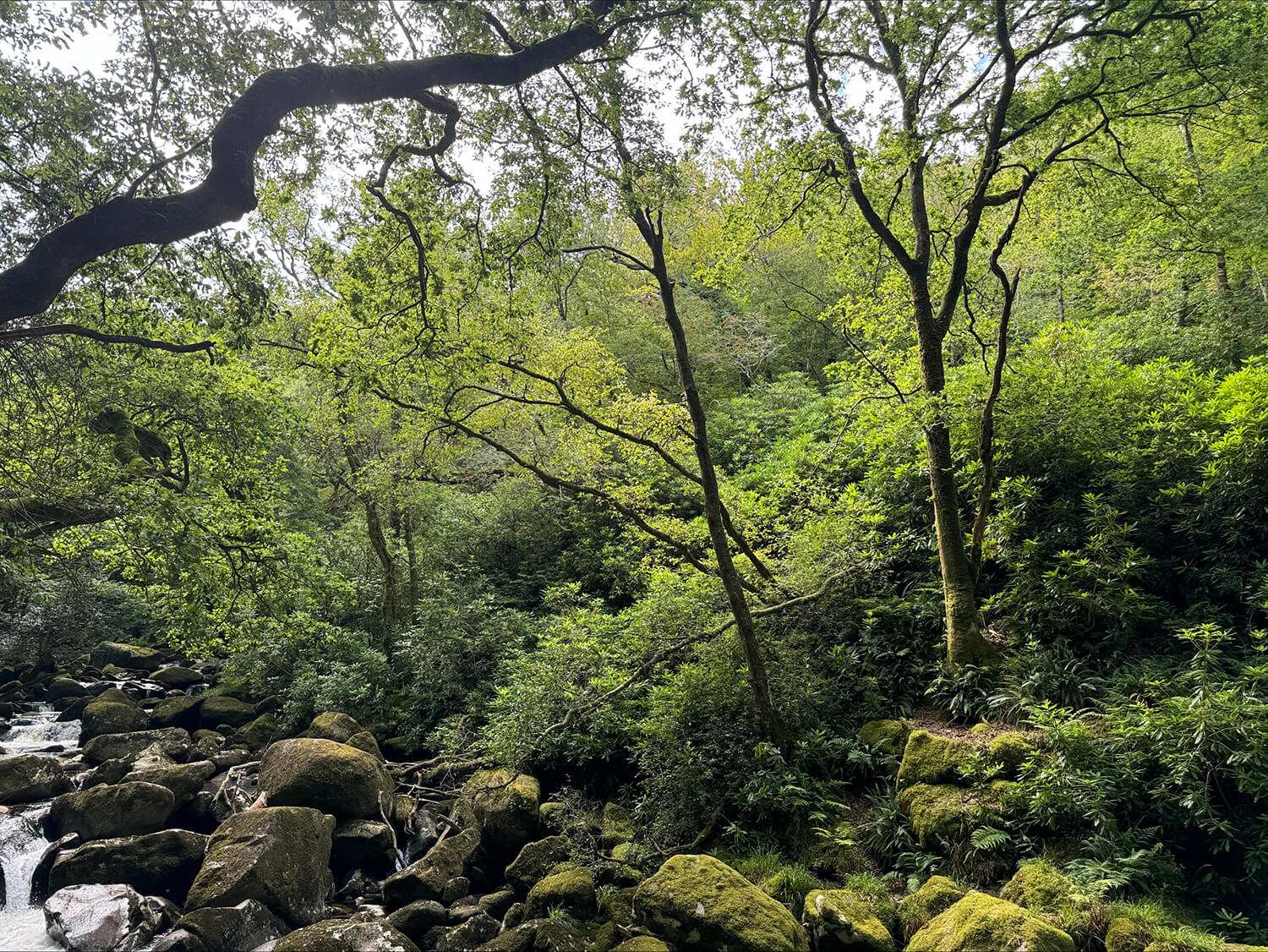Coolstays has protected Temperate Rainforests in the South West in partnership with GreenTheUK and Plantlife
The temperate rainforests of Britain are globally important. They are incredibly biodiverse and home to species of lichens, mosses and liverworts found nowhere else on earth. Coolstays has taken action to help protect the few temperate rainforests we have left in England, helping to support an essential habitat facing a myriad of threats.
Temperate rainforests are not as well-known as their tropical counterparts but still host incredible amounts of species. Found in areas that are influenced by coastal weather systems, with high rainfall and humidity, the bryophyte (moss and liverwort) richness of UK temperate rainforests rivals the cloud forest of the Andes. They also have some of the best examples of ancient dry-bark community lichens in the world. The climatic conditions required to form temperate rainforest occur over less than 1% of the planet, which make it a very rare habitat we must protect, restore and manage well.
Lichens play a crucial role in environmental health and are a vital part of our ecosystem yet often go unnoticed. Woodlands with a mosaic of micro habitats support a rich diversity of lichen species. The south-facing side of a veteran tree, the area where river mist meets the prevailing wind and the exposed sapwood on a tree trunk caused by the action of cattle are all excellent examples of micro habitats which provide the niches where rare lichens can thrive.
Unfortunately, over time Britain's temperate rainforests have become smaller, more fragmented and isolated due to intensive management including woodland clearance, and overgrazing. Remaining remnants now face severe and surging threats from climate change, rampant invasive species, tree diseases and air pollution. Despite being bountiful biodiversity hot spots, nearly three quarters of England’s remaining temperate rainforests do not have any formal protection as they fall outside Sites of Special Scientific Interest. There is a very real threat that this globally significant habitat will slowly vanish unless urgent action is taken.
To protect the temperate rainforest we have left, GreenTheUK is working in partnership with Plantlife to restore sites in Devon and Cornwall, engaging landowners, providing specialist advice and restoring the habitat mosaic that rare lichens need through sensitive woodland management. By working in partnership with landowners and sharing our rainforest knowledge, Plantlife is able to ensure the long-term protection and preservation of these valuable temperate rainforest habitats for years to come.
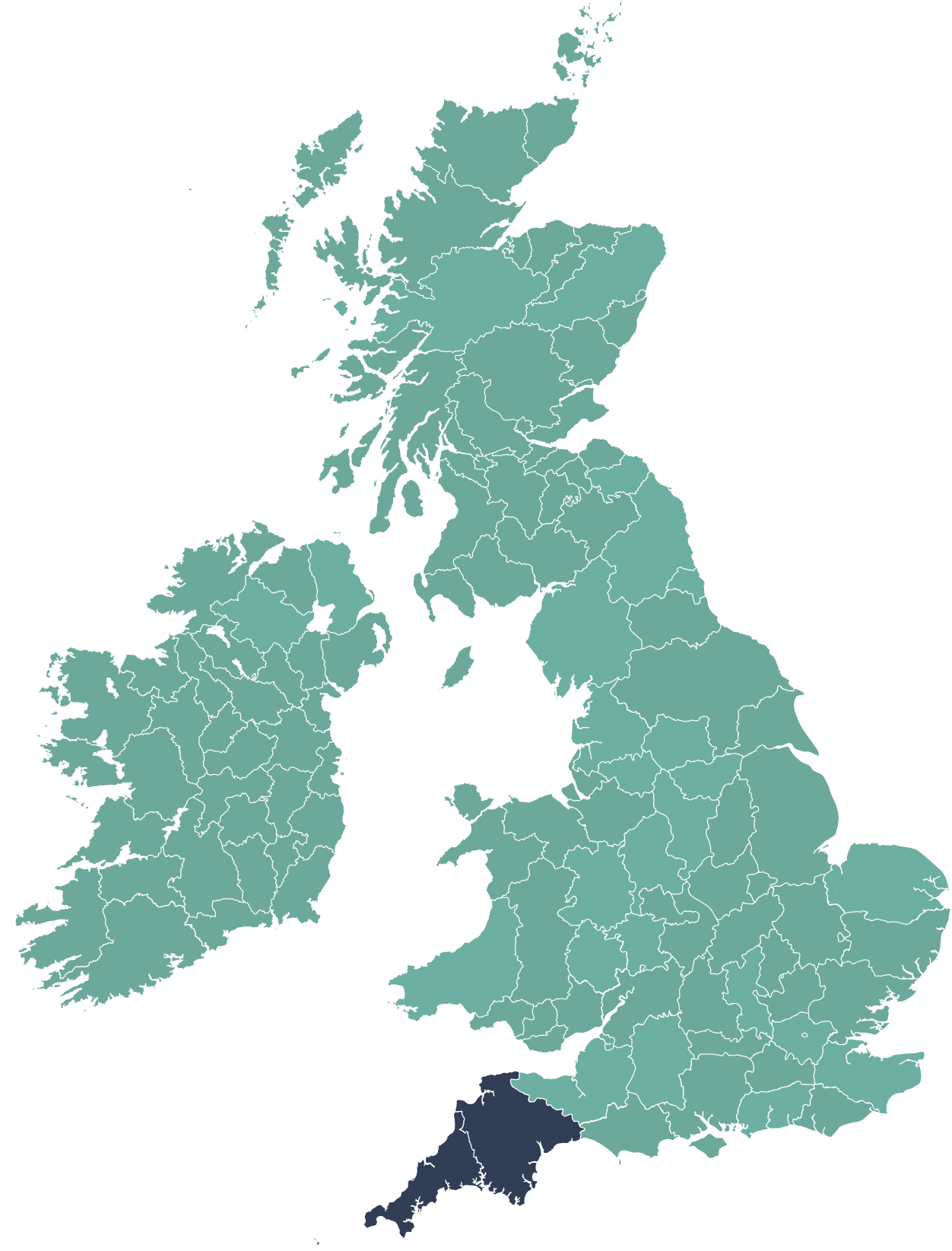
Meet Angie
Angie Cruse is Plantlife’s South West Rainforest Advisor, part of a growing network of rainforest specialists. Angie has a wealth of practical woodland management experience, which allows her to advise land managers on the best woodland management practices around habitat improvements and species recovery.
Angie is essential in the planning and delivery of conservation work in temperate rainforests across the South West, as well as training and advising land owners on best practices.
 Angie Cruse, South West Rainforest Advisor © Angie Cruse, Plantlife
Angie Cruse, South West Rainforest Advisor © Angie Cruse, Plantlife
In 2024, Coolstays supported the recovery of 8 globally important lichen communities, by contributing to essential development work to protect and restore temperate rainforest sites in the South West. This work includes:
- Mapping the locations of rare lichen species on project sites, such as Graphina pauciloculata (pictured), and identifying potential threats to trees that host them, such as invasive plants like Rhododendron ponticum and thick holly coverage. This data has already informed approximately 5 hectares of understorey work on one site and contributed to management planning for veteran trees on another.
- Delivering advice and training to woodland managers, supporting them to better understand rainforest habitats and enable their restoration through effective management.
- Undertaking continuous professional development and knowledge exchange with other Rainforest Advisors, to share good practice and build capacity in the team.
The 8 globally important lichen communities supported by this project are:
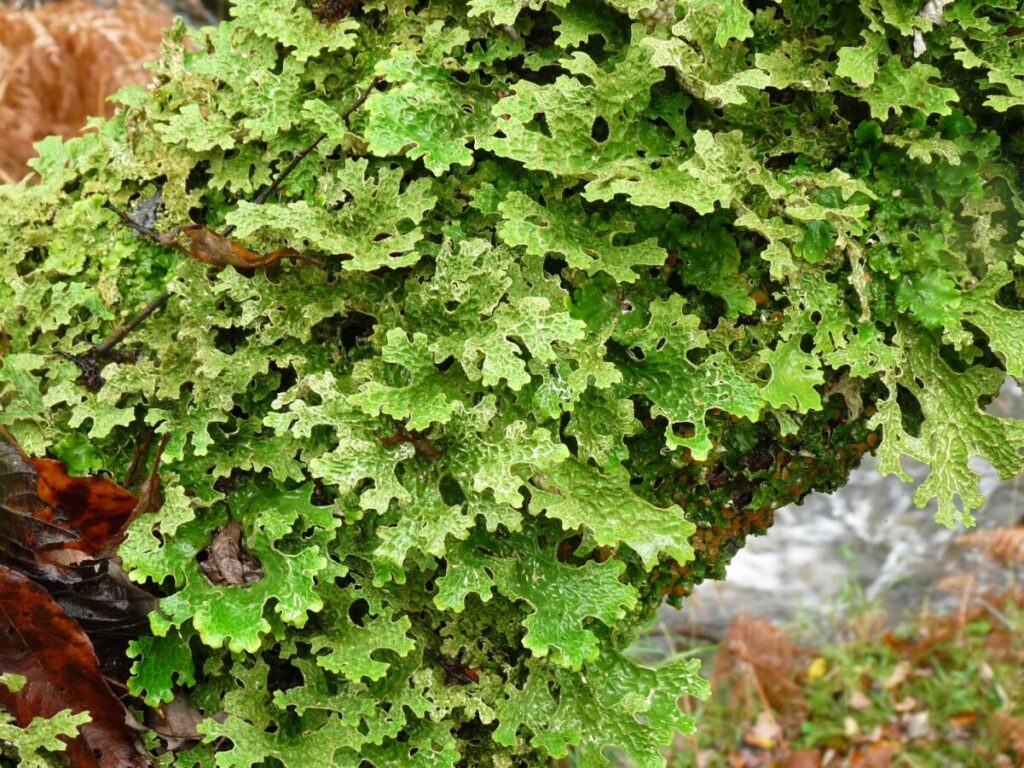
Lobaria pulmonaria
Lobaria pulmonaria or Tree Lungwort. This large, bright green leafy lichen has loosely attached lobes that look like the billowing shape of human lungs, which is where its name ‘Tree Lungwort’ comes from. In medieval times, medics would use Tree Lungwort to treat lung disorders because of its resemblance to human lungs. The Lobarion community grows on trees with mildly acidic or alkaline bark – for example ash, sycamore, willow, rowan and old oak.
.jpg)
Sticta fuliginosa
Sticta fuliginosa or ‘Stinky sticta’ is named after the fishy smell it produces when wet. This lichen has leaf-like lobes, common in lichens within the Lobarion community, and is black-ish brown in colour when wet or dark grey-brown when dry. This species may be one of the most frequently found Lobarian species in Britain’s South West Rainforest and is an excellent indicator of ancient woodlands.
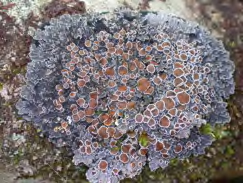
Pannaria rubiginosa
Pannaria rubiginosa, or the Red-eyed Shingle Lichen, has chestnut-coloured fruiting discs and is found on mossy, base-rich trees and rocks. This species is thought to be present in only a few sites in South West England and Wales, however it is a quick coloniser of habitats in Scotland and Ireland. Pannaria rubiginosa is listed as a species which we have ‘International Responsibility’ over as the population in Great Britain is of global significance.
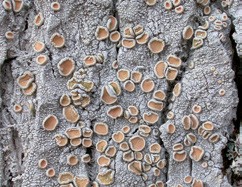
Ochrolechia tartarea
Ochrolechia tartarea is a cudbear lichen within the Parmelion community. It has a thick, warty grey crust with numerous ‘jam-tart’ fruits that are a dull orange-pink in colour. This lichen is used in the production of traditional cudbear dyes.
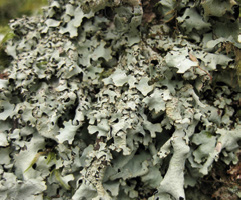
Hypotrachyna taylorensis
Hypotrachyna taylorensis, otherwise known as the Tailed loop-lichen or ‘tumbling kittens’, has blue-tinged overlapping lobes that are often likened to breaking waves. This lichen belongs to the Parmelion community, a group of lichen that occurs on bark, on mats of mosses/liverworts growing over bark or on mossy boulders and rocky outcrops. In Great Britain, this species can only reproduce through bits of it breaking and falling off, as such it can’t disperse very far and is often only found in particularly good quality temperate rainforest sites.
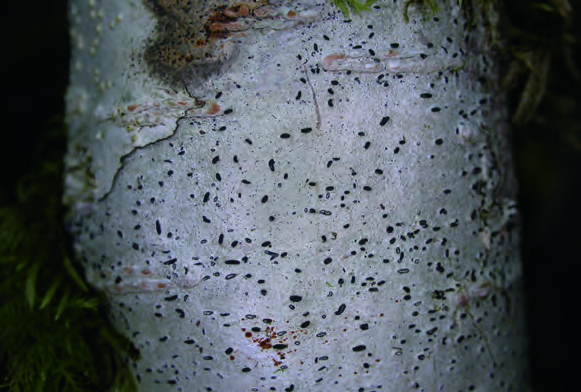
Graphis ruiziana
Graphis ruiziana is a member of the Graphidion community whch is made up of lichens that grow as a very thin crust on the smooth bark of trees such as hazel and holly, usually in moderate shade. If you look closely at these lichens, you will see differently shaped fruiting bodies appearing as dots, flecks, squiggles, warts or pimples on the surface of the lichens. In Graphis ruiziana, the fruit is reminiscent of little black sausages.
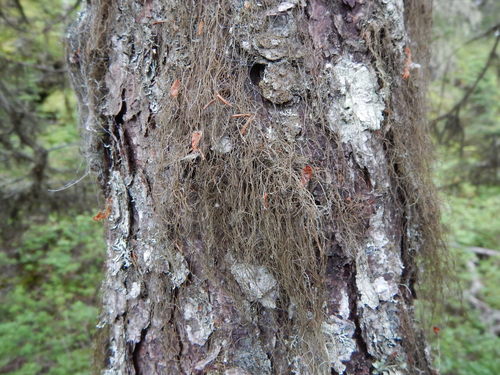
Bryoria smithii
The horsehair lichen, Bryoria smithii, is only known to be present in Britain in two tiny rainforest sites in Devon, where it's believed that the entire population would fit comfortably on two sheets of A4 paper. The species used to be present in Scotland and Wales but has not been seen there for decades. Bryoria smithii is not known to produce fruiting bodies (spores) in Great Britain and instead just reproduces vegetatively, meaning that it can’t disperse very far.
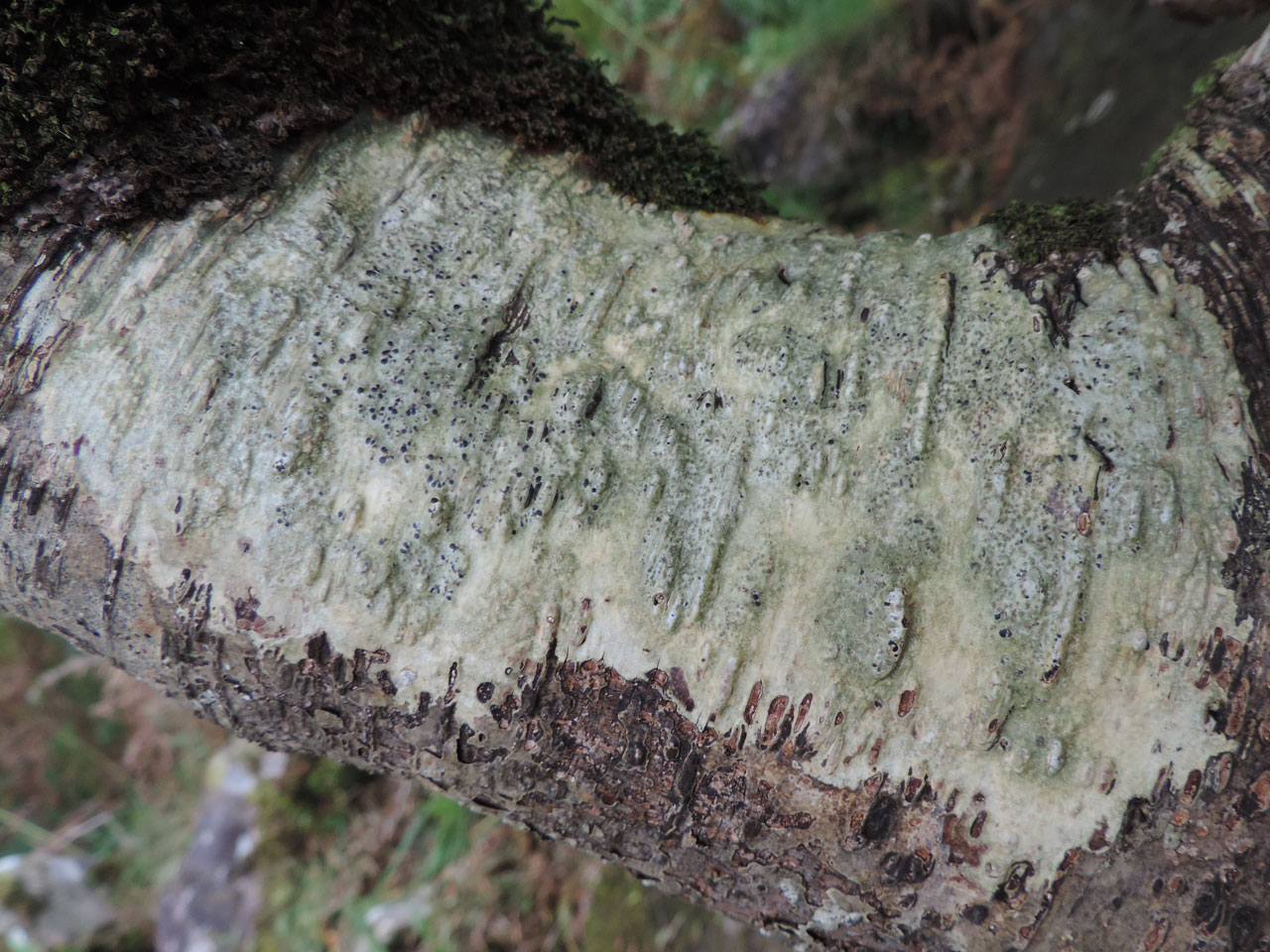
Pyrenula hibernica
Pyrenula hibernica, nicknamed 'blackberries in custard', is a very rare temperate rainforest species, found only in one site in Wales, one in England, a handful of sites in Scotland and Ireland as well as in the Azores and Canaries. This species gets its nickname from its appearance, with a yellow crustose thallus spotted with little black discs called perithecia, it resembles blackberries in custard. It is often found growing on hazel and has such a thick body it can eventually constrict the hazel stem, splitting open as the hazel branch grows beneath it.
Notable native tree species supported by Coolstays across the temperate rainforest sites in the South West include: Ash, Birch, Hazel, Pendunculate Oak, Sessile Oak, and Willow. These species are vital for rainforest diversity as they are important host trees for rare lichens, mosses and liverworts, and their canopies create the conditions for temperate rainforest habitat.


Ash: Fraxinus Excelsior
The ash is the third most common tree in Britain and thrives in rich, fertile soil where it provides a home for woodpeckers and owls. The ash’s leaves, and indeed its whole crown, can move in the direction of sunlight. You have probably heard of ash dieback disease, a fungus affecting both the leaves and crown. It has already wiped thousands of these elegant trees from our landscape, and experts are trying to stop it. Ash is hugely important to many lichen species, so its loss to Ash Dieback is a real threat to many lichens.


Birches: Betula spp.
Birches typically have open crowns and peeling bark, with catkins through the winter months. Their light canopy provides dappled shade, which is important in the context of temperate rainforests, as it creates ideal conditions for mosses, lichens and other ancient woodland flora. Their presence in the composition also increases opportunity for species richness, as their acidic bark offers a different set of niches to that of our base rich trees. Birches are early pioneers, supporting natural regeneration.


Hazel: Corylus Avellana
The common hazel is native to Europe and western Asia and forms an important part of England’s hedgerows. We have all heard of hazelnuts, which are rich in unsaturated fats and protein, and an extremely popular ingredient in many of the world’s cuisines. Did you know that hazel trees were once seen as both magical and a symbol of fertility? Hazel is a very important tree for the script lichens and similar species which like smooth bark. Contrary to popular belief, Hazel does not need to be coppiced, and should be left to grow naturally and undisturbed in rainforest habitats.


Pedunculate Oak: Quercus Robur
Also known as the common or English oak, this is the undisputed king of the woods, supporting more wildlife species than any other native tree in the UK. “Robur” in this oak’s Latin name means “strength” and “hard timber” because this tree produces incredibly durable wood which can be used to make many things, including furniture and flooring. The oak has been considered sacred by many gods in mythology throughout the ages.


Sessile Oak: Quercus Petraea
The sessile oak is Ireland’s national tree and can be found across Europe. Sessile means “without a stalk”, and this tree’s acorns are stalkless, growing directly on twigs. Oaks provide a habitat for many creatures, including red squirrels, badgers, jays, caterpillars and around 250 more species of wildlife.


Willows: Salix spp.
Willows are known for their slender, flexible branches, lance-shaped leaves, and quick regrowth. They thrive alongside rivers and in other damp environments, such as temperate rainforests, due to their tolerance for very wet and heavy soils. Their bark, which is less acidic than other species, makes them good hosts for species of lichens which prefer higher pH and mossy substrates.

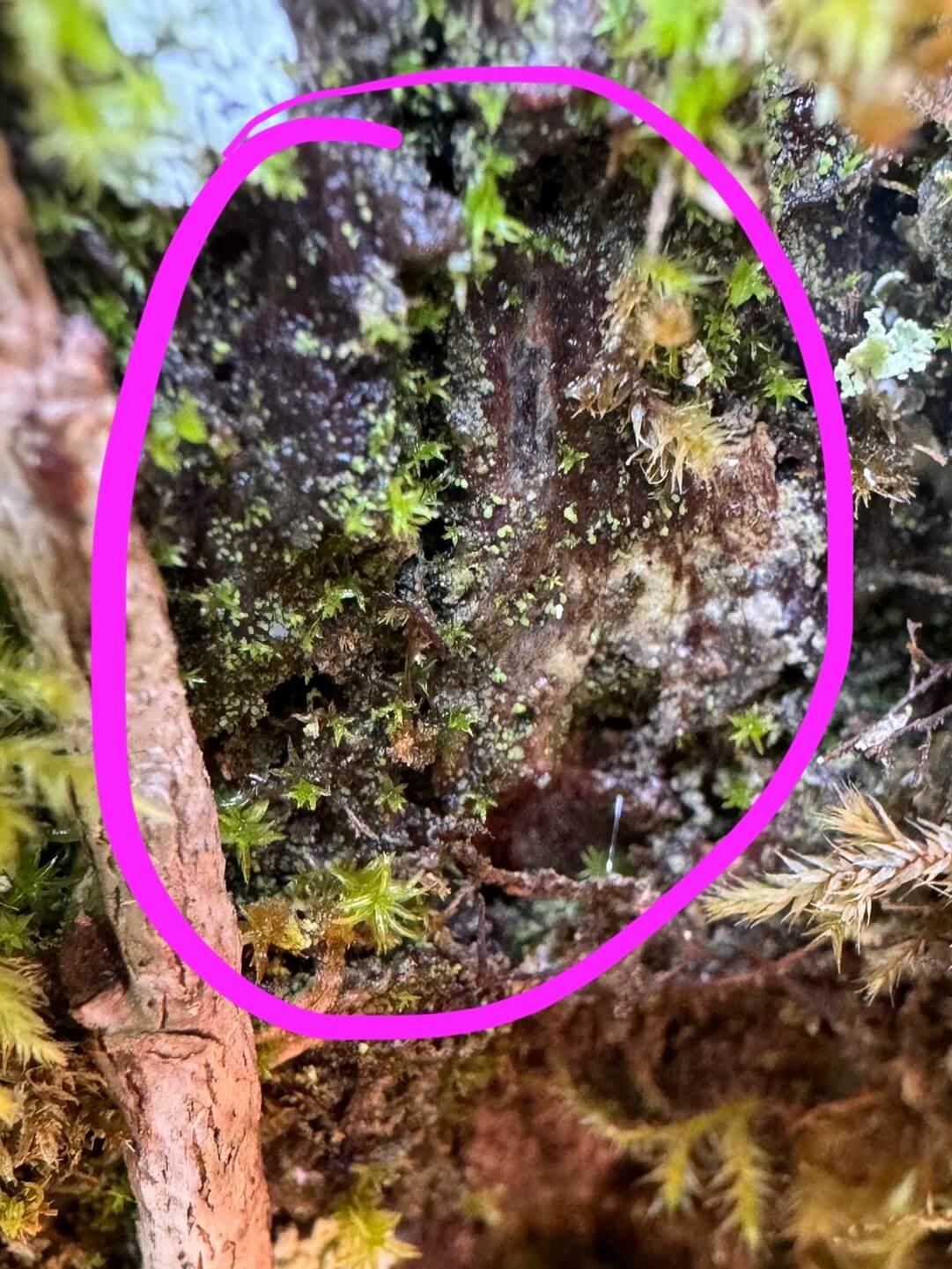 Agonimia octospora © Angie Cruse, Plantlife
Agonimia octospora © Angie Cruse, Plantlife
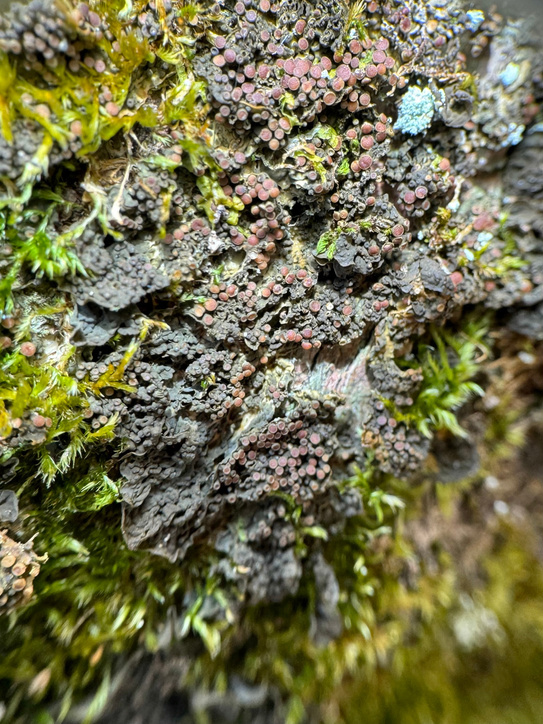 Collema nigrescens © Angie Cruse, Plantlife
Collema nigrescens © Angie Cruse, Plantlife
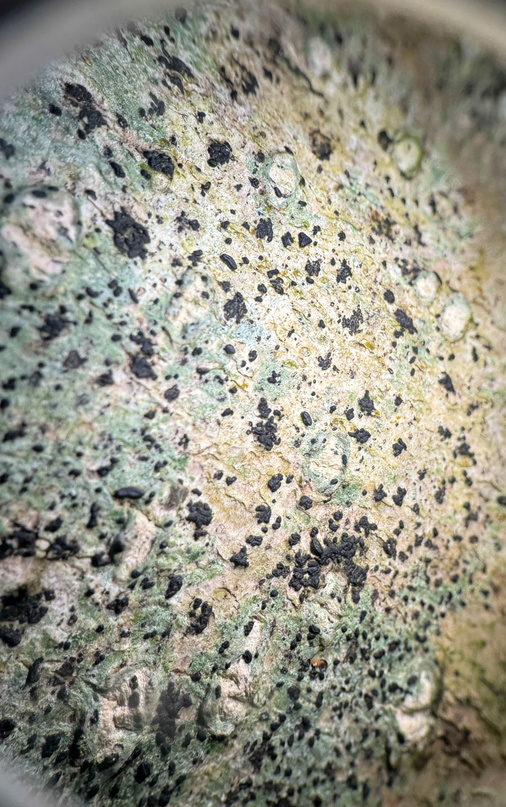 Graphina pauciloculata © Angie Cruse, Plantlife
Graphina pauciloculata © Angie Cruse, Plantlife
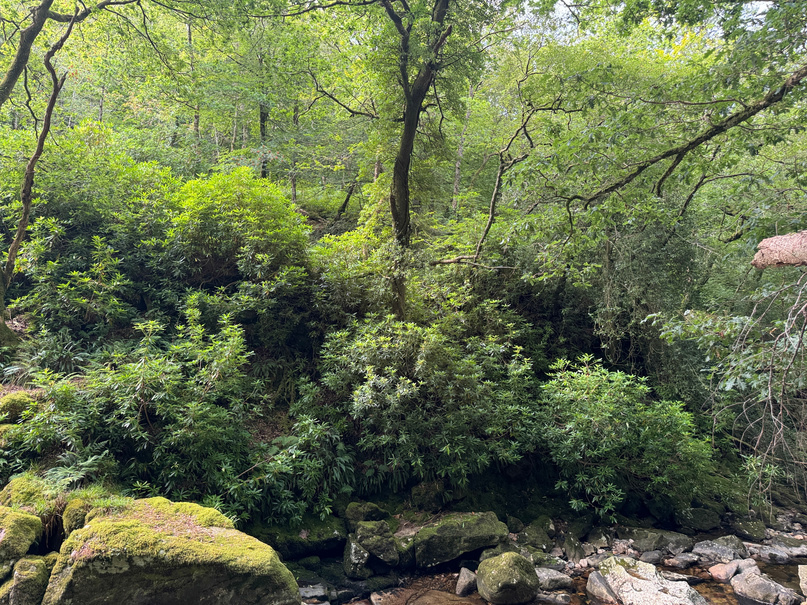 Rhododendron ponticum © Angie Cruse, Plantlife
Rhododendron ponticum © Angie Cruse, Plantlife
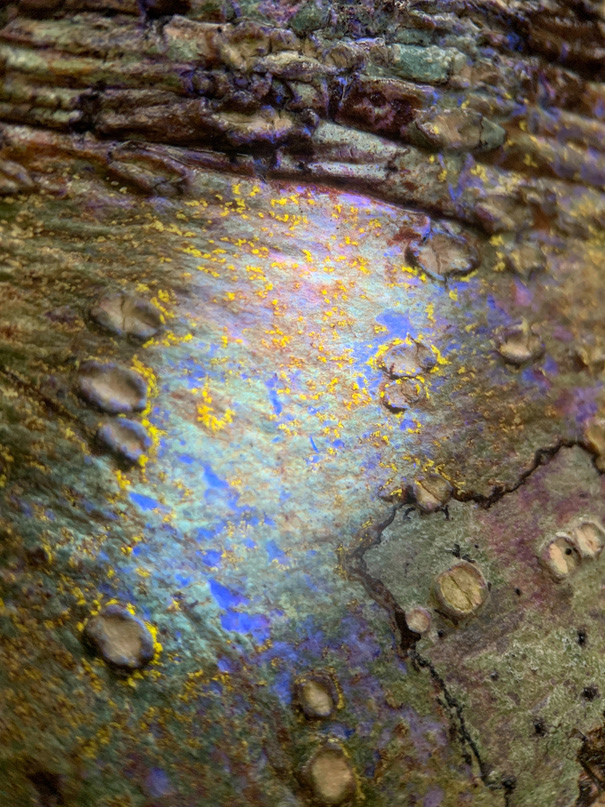 Synarthonia astroidestera © Angie Cruse, Plantlife
Synarthonia astroidestera © Angie Cruse, Plantlife
